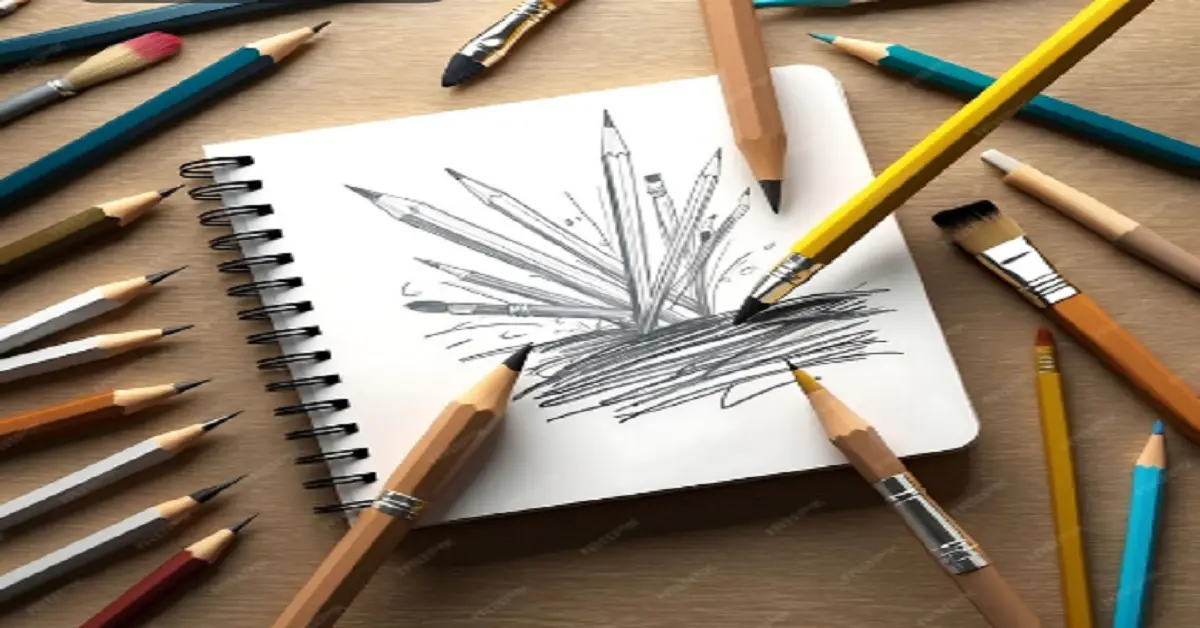The Art of Pencil Drawing: A Beginner’s Guide

Introduction to Pencil Art
Pencil drawing is a timeless art form that has captivated artists and enthusiasts for centuries. Whether you’re a beginner or a seasoned professional, the simplicity of using a pencil:cux3b23phcg= art makes it accessible to anyone with a passion for creativity. But what exactly is pencil art, and why is it so important in the art world? Let’s dive into the fascinating world of pencil art.
What is Pencil Art?
Pencil art refers to creating drawings or illustrations using a variety of pencil:cux3b23phcg= art, from graphite to charcoal and colored pencils. Artists use pencils because they allow for intricate detailing and control, making it easier to express creativity through sketches, portraits, landscapes, and even abstract forms.
The Importance of Pencil Drawing in the Art World
Pencil drawing serves as the foundation for many other forms of visual art. It teaches important skills such as shading, perspective, and texture that can be transferred to other mediums like painting or digital art. Many famous artists, including Leonardo da Vinci, started with pencil sketches before moving on to other forms of art.
Types of Pencils Used in Pencil Art
Different types of pencils produce different results, and each type has its unique characteristics. Let’s explore the most common pencils used in pencil art.
Graphite Pencils
Graphite pencils are the most commonly used in pencil drawing. They range from hard (H) to soft (B) grades, with softer pencils producing darker lines and harder pencils creating lighter marks. They’re perfect for both beginners and experienced artists alike.
Charcoal Pencils
Charcoal pencils create deeper, darker lines than graphite pencils and are great for bold, dramatic drawings. They’re often used for shading and creating contrasts but require more control and practice due to their tendency to smudge.
Colored Pencils
Colored pencils offer vibrant hues and are often used for more decorative and colorful pieces. They come in a variety of wax-based or oil-based formats, and while they are often considered a tool for younger artists, professionals can create stunning works with colored pencils.
Mechanical Pencils
Mechanical pencils provide consistent lines without needing to be sharpened. They are particularly useful for fine details and precise drawings, offering a clean and sharp finish to sketches.
Essential Tools for Pencil Art
Aside from pencils, there are a few essential tools that every pencil artist should have in their kit.
Erasers: Kneaded vs. Vinyl
Kneaded erasers are soft and moldable, perfect for lifting graphite without smudging. Vinyl erasers, on the other hand, are more rigid and better suited for erasing large areas or heavier lines.
Blending Tools: Tortillons and Stumps
Blending tools like tortillons (rolled paper sticks) and stumps help in softening lines and creating smooth shading. These tools are especially useful in achieving a soft, blended look in pencil:cux3b23phcg= art.
Paper Choices for Pencil Drawings
The type of paper you use can make a significant difference in your drawings. Smooth paper is ideal for detailed work, while textured paper allows for more visible strokes and a grainy finish, which can add depth to a drawing.
Basic Techniques in Pencil Drawing
Mastering basic techniques is crucial for creating beautiful and expressive pencil art.
Shading Techniques
Shading adds dimension and life to pencil drawings. Here are a few techniques to keep in mind:
Hatching and Cross-Hatching
Hatching involves drawing closely spaced parallel lines to create texture and shadows. Cross-hatching is similar but involves drawing intersecting lines at different angles for deeper shadows.
Blending and Smudging
Blending involves softening pencil lines to create a smoother, more realistic look, while smudging can give shadows a soft, blurred effect. You can use blending tools or even your fingers to achieve this.
Creating Textures with a Pencil
Creating texture adds realism to your drawings. Whether it’s fur, fabric, or stone, different pencil strokes can help you mimic real-life textures.
Step-by-Step Guide to Drawing with Pencils
Let’s walk through the process of creating a pencil:cux3b23phcg= art from start to finish.
Setting Up Your Workspace
A well-organized workspace helps set the tone for a productive drawing session. Ensure good lighting and a clean surface to prevent smudging.
Sketching Basic Shapes
Start with light sketches of basic shapes. This serves as the foundation for more detailed work. Don’t worry about perfection here—just focus on getting the proportions right.
Adding Details and Shading
Once the basic shapes are in place, gradually add more details. Introduce shading to give depth to your drawing, paying attention to the light source.
Refining and Final Touches
As you near completion, refine the details and clean up any unwanted marks. Use an eraser to highlight certain areas and sharpen your pencils for crisp lines.
Common Mistakes in Pencil Art and How to Avoid Them
Mistakes are a natural part of learning, but here are some common pitfalls to watch out for:
- Over-blending can result in a loss of detail.
- Smudging by accident is common; always rest your hand on a scrap piece of paper.
- Drawing too heavily can make erasing difficult, so start light and build up gradually.
Inspiration and Ideas for Pencil Art Projects
Looking for inspiration? Try creating still life pencil:cux3b23phcg= art, portraits, or even abstract art. The possibilities with pencil art are endless, and practice will help you improve.
Conclusion
Pencil:cux3b23phcg= art is a rewarding and versatile art form. Whether you’re just starting out or have years of experience, mastering the fundamentals of pencil art will help you express your creativity in new and exciting ways.